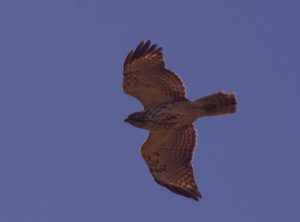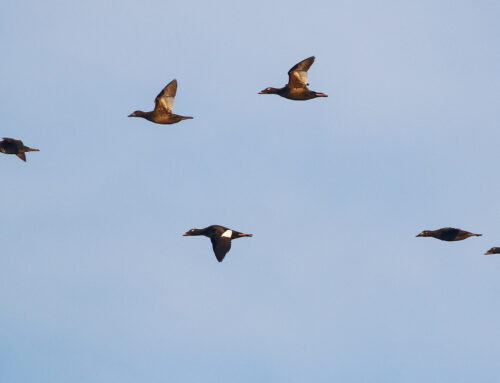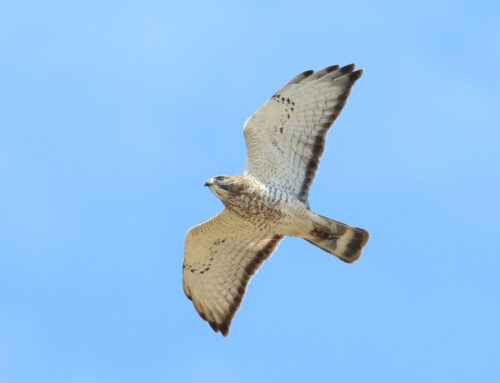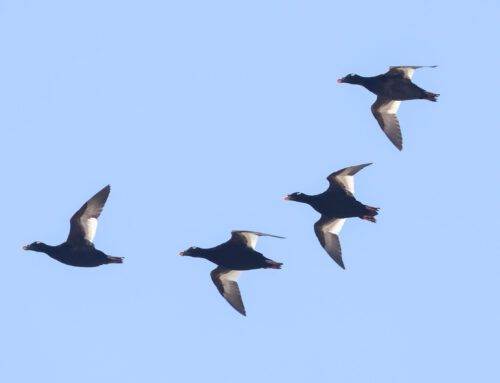
With a total of 6,585 counted by the end of April, Sharp-shinned Hawks are the most common species for the first half of hawk count. Chart generated at https://dunkadoo.org/project/wpbo-hawk-count
May is here and the hawk count at Whitefish Point is just past the halfway point. Snowdrifts are suddenly difficult to
find, even in the deep woods, and with gradually warming weather has come a clear turnover in the species composition tallied here each day. Red-shouldered Hawks have vanished and Golden Eagles, formerly found nearly daily, are now scarce. Osprey, Peregrines, and the first humongous kettles of Broad-wings have become standard fare. The Common Redpolls which continually filled the sky throughout the early part of the count are nowhere to be found, replaced just recently by the flashy American Goldfinch.
Through the end of April the hawk count total has reached 9,755 raptors, over two-thirds of which (6,585) were Sharp-shinned hawks. The second highest count belongs to Red-tails, the only other species to squeak past a thousand individuals, at 1,082. Kestrels were next, at 535, thanks to a couple incredible afternoons in late April. Fourth and fifth most common were Northern Harrier and Bald Eagle, at 346 and 283 individuals, respectively. Of course, raptors aren’t the only birds I’m counting from the hawk deck though — finches account for over a quarter of the full total! Explore data from the Spring 2017 season in its entirety in the interactive charts found at Dunkadoo.

As the fourth-least-common raptor this season with only 26 individuals to date, Red-shouldered Hawks are a rare treat on the count. Photo by Gary Palmer.
This week’s passerine highlight was the season’s first Boreal Chickadee! Late Wednesday morning, as I was counting a swarm of well over a hundred Broad Winged hawks streaming across the sky in the distance, I heard one’s raspy calling from the swale behind the hawk deck. A couple birders dashed down the steps in pursuit, and were rewarded with a fantastic view of one Boreal as another called from nearby.
Finally I’d like to say a huge THANK YOU to everyone who came out during Spring Fling last weekend!! It was incredible meeting so many birders from so many different places and spending days simply enjoying the birds together. I look forward to seeing what the final stretch will bring — much of the excitement of a spring migration is now on the horizon, and I hope to see many more birders along with the coming birds!






Hi Gary,
I am editing my photos from there when I remembered how to get data summaries from Hawkcount.
I was able to easily grab a summary of all years of WFP’s data by species on Hawkcount. I ran average and standard deviation of all years and last 10 & 15 year averages. It’s all on an excel spreadsheet. I can’t find a way to attach the spread sheet here. If you would like the spread sheet either send me an e-mail or let me know how to send an attachment to you.
HI it’s me again,
You can get the data I did by going to Hawkcount, latest data, monthly. After the last months data there is a section with 3 tabs (abbreviation key, previous month comparison, previous season comparison). After clicking the comparison tab of interest, the data pops up and can be copied and pasted into a spread sheet.
Also, on the site profile are tabs for Migration Timing and RPI that also give data summaries.
I hope this helps.
Janice